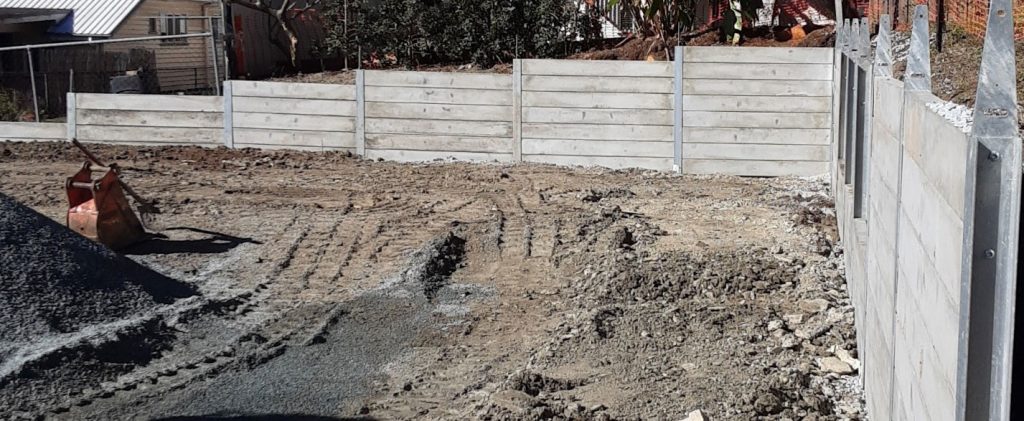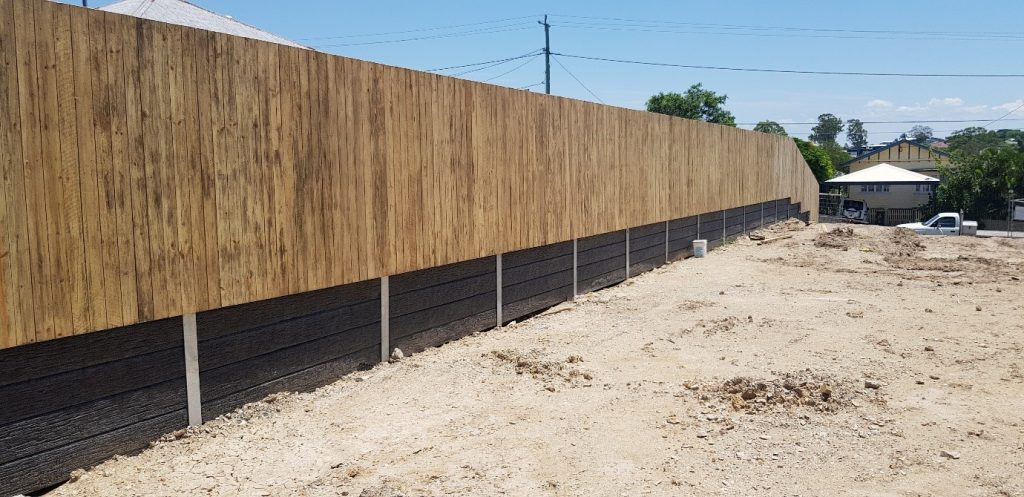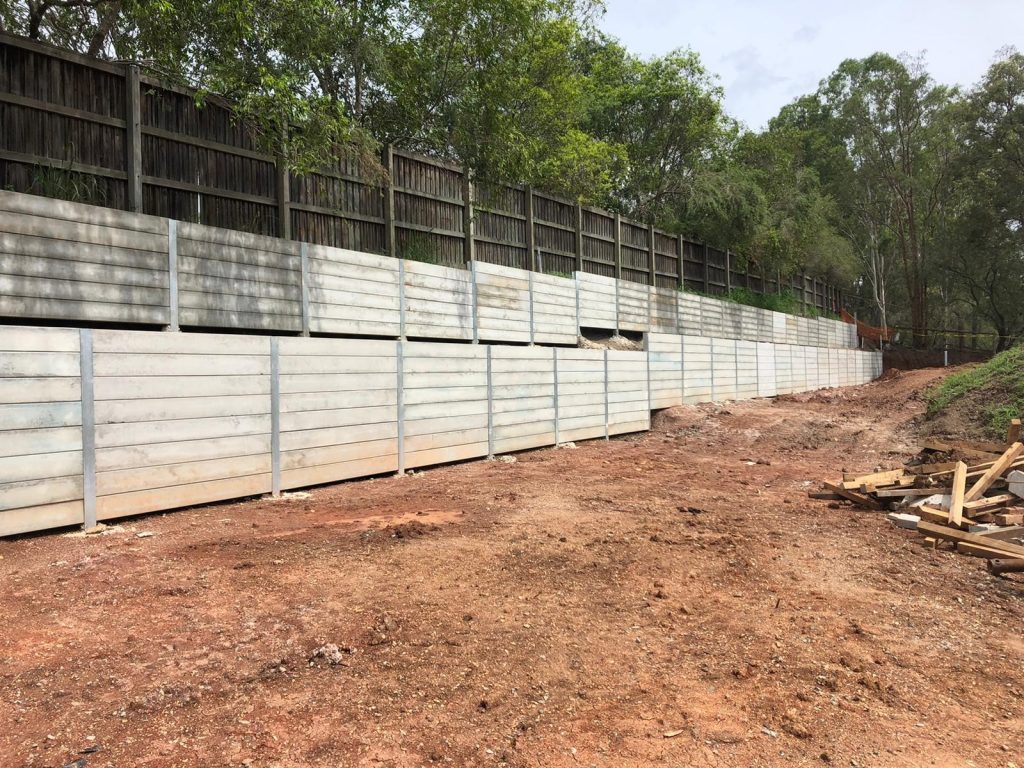The purpose of a retaining wall is exactly that, a wall that is built to retain. We build retaining walls most often when we are doing earthworks on site. They are a great way to build a flat block while still maintaining the structural integrity of the surrounding soil. There are two cases where we build retaining walls: when we cut a property of its soil or if we fill the property with soil. The image above is an example of where we have had to cut a property and we needed to retain the neighbours earth. The retaining wall helps the neighbouring property remain untouched while the site we are working on can be made flat. The other case is when we are building up a block and need to retain the soil on site from spilling onto neighbouring property.

The process for building this type of retaining wall is to firstly drill the holes for the post footings. It is common practice to use an auger that attaches to an excavator. An auger is a large attachment that resembles a corkscrew. The size of the hole is determined by the height of the post and as a general rule the depth of the footing is the height of the post out the ground. The next step is to set out the posts at the individual holes to make sure we have everything we need and then we pour concrete into each hole. While the concrete is being poured into each hole, we place the post into the hole and use a laser on site to make sure we place the post at the correct height. During this whole process we use stringlines to make sure the posts are in line with each other. We leave the concrete to dry overnight and then come back the following day and place the sleepers between each of the posts making sure each sleeper is level. Depending on the developers/owners request we can install fence brackets on top of each post so that we can construct a fence between neighbouring properties. The retaining wall has nearly finished coming together but the last thing to do is install a below ground drainage system which is generally a slotted pipe encased with gravel and fabric. Once this is installed then it is time to backfill behind the wall at the level on plan.

Not only can retaining walls be used as a structural barrier they can also be visually pleasing and in some cases different designs can be used with different colours to turn it into a property feature.

